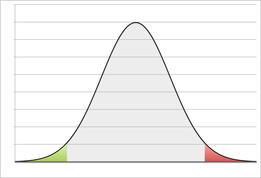 The Five Pillars Every doctor has his or her own conception of what constitutes good health. As I have discussed, my concept is a dynamic one in which we become more healthy as our body systems function at a higher level. The Anti-Inflammation Lifestyle (AIL) promotes health by improving function at the cellular level. Lowering inflammation enables the cells of our bodies to work more efficiently and improves circulation which improves the ability of cells to obtain adequate nutrition and effectively clear toxins and waste. A healthy diet and proper supplementation together form two of the five pillars which comprise the AIL, the other three being: exercise, stress management, and restorative sleep. Like the legs of a stool, each of the five pillars plays a role in supporting the AIL, upon which optimal function and health ultimately rest. “How important is it really to exercise? I eat well, I take supplements, I am not overweight, and my stress levels are low. My wife and I even walk on weekends. So aren’t I healthy? Do I really need to do exercise every day?” I am asked some version of this question on almost a daily basis in my practice. Some people just hate to exercise. Others are averse to swallowing pills, making it difficult for them to take important supplements. Still others have difficulty breaking unhealthy food cravings. In the end the question seems always to be, “Can’t good health be achieved by using four of the five pillars? Or three?” Just as the concept of health itself is a relative one (higher or lower levels of function correspond to better or worse health across a wide Continuum), so should each of the pillars be considered fluid. It is not so much a question of whether one’s diet is good or bad, whether one exercises or not, whether one takes all the right supplements or none of them, etc. Rather it is a question of making effort to move in the right direction along the Continuum of health, and to do so we must try to move at least to some degree in the right direction along the continuum of each of the five pillars. The Anti-Inflammation Lifestyle means eating progressively better over time, taking the right supplements, doing one’s best to create a routine of regular exercise, not allowing stressful life situations to go unaddressed for too long, and creating healthy sleep/ wake cycles with adequate rest. Can a person be healthy and not eat healthily? Can a person be healthy without exercising? Without sufficient rest? Without managing their stress levels? Without taking supplements? Well, four good legs on a stool are a lot better than three, but they are less strong and stable than five. Of the Five Pillars of good health, cardiovascular exercise stands in the center, bearing more of the burden of support than any of the others.
0 Comments
While in chiropractic school, some of my colleagues and I used to tell the following joke:
Q: What is the definition of health? A: An incomplete work-up. Immersed in studies of endocrinology, obstetrics, orthopedics, etc., we were captivated by the detective’s game of diagnosis, the collection of data and its sorting and re-sorting into logical chains of decision making to arrive at a named condition: diabetes, carpal tunnel syndrome, migraine, etc. Everyone had something–at least everyone who came through our clinic doors did. That was the reason they were there. Our job, we were taught, was to find the problem and put a name on it so that we could treat it. If we could not find the diagnosis, we had no business offering treatment. So when the diagnosis was elusive, we had to look harder, be more clever detectives. If we interns were not clever enough we would look to our attending physicians for help, who in turn could consult with their department heads if they got stuck. If the head of a department could not make a reasonable diagnosis that meant there was nothing physically wrong, and the case was classified as ‘supratentorial’ (psychological or psychiatric in nature). During my internship I attended several patients with complaints such as fatigue, generalized body aches, insomnia, constipation, indigestion, etc., who never received a diagnosis and as such, never received treatment at our clinics or hospital. Their blood work, imaging studies, and urinalysis was normal. There was nothing really wrong with them, and such patients were dismissed or referred out for psychological or psychiatric evaluation. Our model, never explicitly stated but certainly transmitted to us through example, was that health was the absence of identifiable disease. A patient with symptoms but no disease was either a complainer, someone looking for attention, a person working the system for benefits of one kind or another, or a psychiatric patient, not a chiropractic one, healthy of body if not of mind. But what about patients with chronic pain who’d never had an injury, had no real findings on their exam other than tenderness, but who did not seem to be seeking attention, never stayed home from work, were not involved in litigation of any kind, did not have a Worker’s Compensation or Personal Injury claim, and who were paying hard-earned cash out of meager budgets to seek help from us? Fatigue, sleeplessness, body aches–these were common complaints, but they were symptoms not diagnoses. And what about the patients who came in for a yearly physical with no specific complaints, but were clearly obese and became winded just climbing up and down from the exam table? ‘Out-of-shape’ may not be a medical diagnosis but clearly such a person is not healthy. At the earliest stages of my clinical training I had a sense that health went beyond the mere absence of identifiable disease. Over time it became clear to me that, like any complex human descriptor, ‘health’ is not best described in dualistic terms of black or white. People were not simply either intelligent or stupid, tall or short, good or bad; and patients were not simply either healthy or sick. Health, it seemed to me, was a term that lent itself to infinite degrees of qualification depending upon factors objective (blood tests, physical examination, imaging studies) but also subjective (one’s sense of happiness and well-being). Since entering chiropractic college in 1984, I have been engaged in an ongoing process of developing and refining my own theory of health which is based on the concepts of function and well-being. When the systems of the body are functioning at their highest capacity and a presiding sense of satisfaction and well-being describes one’s condition of mind, a state of optimal health has been attained. When any of the body’s systems are functioning at very low capacity (or has ceased to function at all) there is disease. But in-between these extremes lie infinite variations in the level of physiological function and well-being, infinite degrees of health. Health, in my perspective, is something best understood not in dualistic terms ('sick' or 'healthy'), but as a continuum.
The optimal conditions for health seem to include: low or manageable stress levels, relatively low body fat percentage (under 15% for men, under 20-25% for women, depending on body type), good energy, sound sleep, effortless digestion, clarity of mind, habits of healthy eating and exercise, and the strength and endurance to be able to perform life’s tasks and activities easily and well. When one is at a high level of function a degree of good health is evident. But how many of us can say that their stress levels are truly as low as we need them to be? How many of us feel tired a lot of the time? Are healthy eating and exercise your daily habits? How about your waistline? When our lives become too busy for us to ever feel caught-up with our obligations, when we realize that it has been months or years since we engaged in regular exercise or physical play, when a truly great night’s sleep is an exception rather than the rule, when we find ourselves choosing the elevator over the stairs just to go up one or two flights, something has gone wrong. We may not have a diagnosable disease, but our level of function and well-being (our health) has been diminished. Part 2 of the supplements series
No. Well, yes. Okay, read on... Everything bodies need nutritionally to maintain adequate health and function can be provided through a proper diet. Protein, healthy fats, fiber, vitamins, anti-oxidants, and minerals are abundant in nature, and without too much effort or expense, adequate nutrition in the United States should be the rule. Sadly, this is not the case. One reason is that our lifestyles have changed in such a way that convenience is often the deciding factor in choosing what, when, and how we eat. Fresh, nutritious foods are generally less convenient and more costly than packaged, processed foods. In 1970, Americans spent about $6 billion on fast food; by 2000, that number grew to more than $110 billion! Americans today spend more money on fast food than they do on higher education, computers, or cars. The problem, as we all know, is that fast food tends to be high in bad stuff like preservatives, additives, flavor enhancers, saturated and trans-fats, sugar, starchy carbohydrates, extreme levels of sodium, and of course calories, while also being notoriously low in the good stuff we need like vitamins, minerals, lean protein, fiber, and healthy fat. It is recommended that adults eat at least 6 servings of fresh fruits and vegetables per day. But do you? On average, Americans eat less than one and a-half servings of fruits and veggies per day with nearly 20% of adults reporting consuming less than one whole serving of fresh fruit per week! Statistics show that nearly half of young adults regularly skip breakfast and about one quarter regularly skip lunch. Skipping meals leads to habitual snacking, and more than half of all Americans eat packaged, processed snack food on a daily basis. Like other fast foods, most snack foods are high in bad stuff and low in the good stuff. Perhaps most alarming is the fact that so-called ‘healthy snacks,’ like granola, energy bars, trail mix, fruit roll-ups, raisins, and ‘power bars,’ are often not much better for you than chips or candy. Marketed as ‘natural’ and ‘health’ foods, these items are generally loaded with sugar and processed with chemicals to keep them from spoiling or clumping. To your body there is little difference between trail mix and a candy bar. Fast food, junk-food snacking, caffeine-laden ‘energy drinks,’ missed meals, and late night eating are all part of our fast-paced American lifestyle and the result is that most Americans are not getting all the nutrients they need from their diet. As if this weren’t enough reason to consider nutritional supplementation, fruits and vegetables are simply not as packed with nutrients as they once were. Many health professionals now believe that the recommendation of 6 servings/day of fresh fruits and/or veggies should be increased to 6-8 servings. Commercial farming practices have led to soil depletion, breeding of crops (and animals) for size and appearance over nutritional value, and the picking of produce long before many of the most important healthful nutrients have been adequately absorbed or developed. In 2004, The Journal of the American College of Nutrition published startling findings which showed that the nutritional value of fruits and vegetables have been steadily declining since 1950.(2) Produce, though bigger and better looking than ever, has less taste and lower nutritional value than it once did. Broccoli in 2004 contained about half the calcium it did in 1950, and that’s just the tip of the nutrient-drain iceberg. Levels of calcium, riboflavin, vitamin C, iron, potassium, and protein in virtually all commercially grown produce have significantly declined, and this report covered only a few common nutrients; potential declines in lesser-known but highly important nutrients like lycopene and zeaxanthin are unknown. The growth of organic farming and the increasing popularity of Farmers Markets which offer foods of higher nutritional value, grown in more nutrient dense soil, and typically allowed more time to ripen on the vine or tree, represent our best attempt to reverse the nutrient drain. Organic and sustainably farmed foods could potentially eliminate the need for supplementation to achieve adequate nutrition. But are you eating 6-8 servings of organic produce each day? And what do we have to do to get better than just “adequate” nutrition? Author: Dr. Gregory Berkoff |
AuthorArchives
August 2021
Categories
All
|




 RSS Feed
RSS Feed